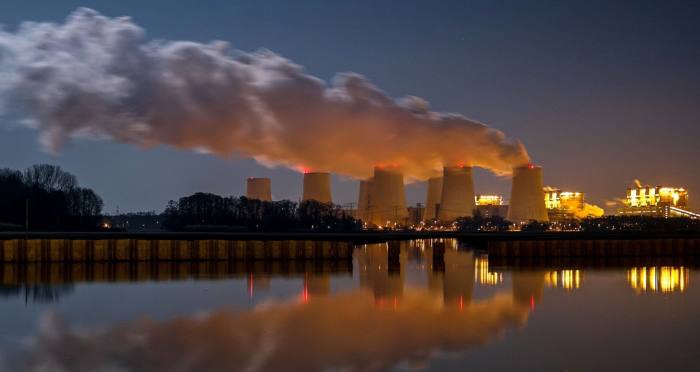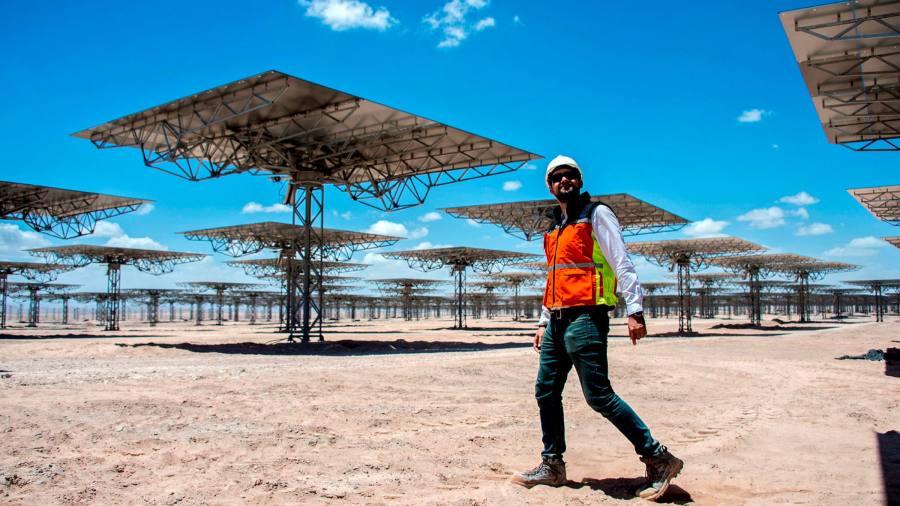[ad_1]
Brazil is touting itself as a leading global offshore oil producer, Mexico’s president is hell-bent on jacking up crude output, Argentina’s state oil firm is sinking billions into blasting shale oil out of rocks and Ecuador’s new leader has pledged to double oil production.Â
To judge by this fossil fuel frenzy, one might be forgiven for thinking that Latin America’s governments had not heard of the global climate emergency. The region’s addiction to oil and gas, preferably extracted by state-controlled companies, is strong. It sits naturally with leaders whose economies have long been tied to natural resource exports.
There is, however, a notable exception to this climate-blind rush in Latin America towards hydrocarbons. Chile has put together one of the world’s most ambitious plans for renewable energy, hoping to capitalise on the blessings of abundant strong winds in southern Patagonia and fierce sun in the northern Atacama Desert to generate green electricity at rock-bottom prices.
Investors have noticed. More than 40 per cent of foreign direct investment in Chile last year went into renewable energy and the country has been ranked top in the world for attractiveness by Bloomberg’s Climatescope.
The Chilean vision does not stop at green electricity. The government hopes to establish the Pacific nation as a leading global exporter of green hydrogen, a fuel produced without emissions, which has excited some experts because of its environmental credentials.
Chile’s pitch is that the electrolysers needed to make the hydrogen will fall sharply in price as production scales up and larger models are built (pilot projects are already under way in several parts of the world). It can access clean renewable energy at very low cost, allowing it to undercut potential rivals such as Saudi Arabia and Australia as the world’s cheapest producer of green hydrogen.
Climate Capital

Where climate change meets business, markets and politics. Explore the FT’s coverage here.
Are you curious about the FT’s environmental sustainability commitments? Find out more about our science-based targets here
Such arguments are plausible, as they rest on largely proven technology and trends already under way. (In Australia, abundant solar power has pushed the price of wholesale electricity below zero at times of peak sun.) Certain energy-intensive applications, such as powering heavy mining trucks, large ships or aircraft are difficult or impossible to serve with existing battery technology.
What is much less certain is whether green hydrogen is the best solution and hence whether a global export market for it will emerge. Elon Musk has mocked the idea of hydrogen fuel cells while a rival billionaire, Australian iron ore magnate Andrew Forrest, hopes to prove him wrong by turning his Fortescue mining operation into a green hydrogen exporter.
Even assuming that carbon-free hydrogen can be produced at scale cheaply — Chile is targeting below $1.50 per kilo by 2030, a fraction of the current $4.30 — one of the main obstacles is how to transport it. Unlike natural gas, hydrogen must be liquefied at temperatures close to absolute zero, a costly process, which consumes 30 per cent of the gas’s energy value, before being moved. Only specially adapted trucks or pipelines can do this; the world’s first ship built to carry hydrogen is undergoing sea trials. An alternative may be to convert the hydrogen to ammonia, which is easier to despatch.
Despite these considerable obstacles, Chile’s government deserves praise for the determination and thoroughness with which it is pursuing alternative energy, both for domestic use and as an export industry. Fossil fuel addicts elsewhere in the developing world should sit up and take note.
[ad_2]
Source link






